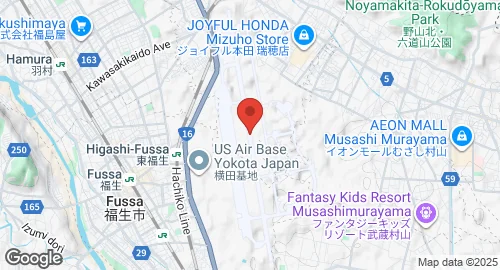Yokota Air Base
Summary
| Operating Country | 🇺🇸 United States |
| Location | 🇯🇵 Japan |
| Status | ◉ Active |
| Usage | Dual |
| Year built | 1940 |
| Operating Organization | US Air Force |
| Units |
|
Description
Yokota Air Base, also known as Yokota Hikōjō, is a Japan Air Self-Defense Force (JASDF) and United States Air Force (USAF) base located in the Tama Area of Western Tokyo, Japan. It was originally constructed by the Imperial Japanese Army (IJA) in 1940 as Tama Airfield, serving as a flight test center during World War II. After Japan's surrender in 1945, the United States Army 1st Cavalry Division took control, renaming it Fussa Army Airfield, then Yokota Army Airfield. It became Yokota Air Base in 1947.
The base has been continuously operational since 1940. During the Korean War, Yokota served as a crucial hub for combat missions, hosting various fighter, bombardment, and reconnaissance units. In the Cold War era, it supported tactical fighter and air refueling operations, and saw increased activity during the Vietnam War for ferrying B-52 Stratofortresses and deploying F-105 Thunderchief squadrons to Southeast Asia. In 1971, combat squadrons were transferred, and Yokota became a non-flying station until 1975 when the 345th Tactical Airlift Squadron with C-130Es was assigned. Headquarters, Fifth Air Force, moved to Yokota in 1974.
Currently, Yokota Air Base is used for airlift missions throughout East Asia. The host unit is the 374th Airlift Wing, which includes operations, mission support, maintenance, and medical groups. Key flying units include the 36th Airlift Squadron (C-130J Super Hercules), 459th Airlift Squadron (UH-1N Iroquois, C-12J Huron), and the 21st Special Operations Squadron (CV-22B Osprey). The base also seasonally hosts RQ-4B Global Hawks of Detachment 1, 319th Operations Group. Since March 2012, it has housed the JASDF Air Defense Command Headquarters, and the headquarters of United States Forces Japan is also located there. The base occupies 7.07 km² and features a 3,353-meter concrete runway. There have been discussions and agreements regarding potential joint civilian-military use to relieve traffic at other Tokyo airports.
